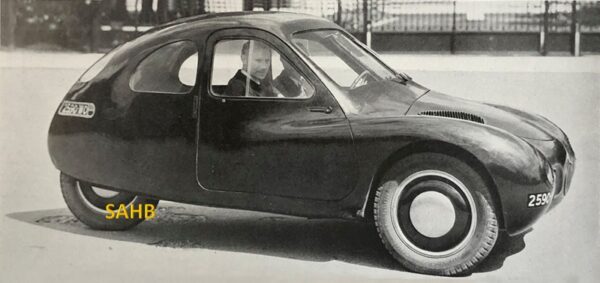
The Mathis company can trace its origins to the car dealership set up by Émile Mathis (1880–1956) in his birthplace of Strasbourg. Apart from makes such as Fiat and Panhard-Levassor he sold cars designed for him by Ettore Bugatti, under the name Hermès. The first Mathis car arrived in 1910 but the first real success came from the small Babylette and Baby models just before World War I.
During the war, Mathis, an Alsatian and therefore a German citizen, was conscripted into their army and sent to Switzerland to buy materials. He deserted and joined the French army. Returning to France in 1918, Mathis regained his factory and his company soon became No.4 in France, making more than 20,000 cars in 1927.
In 1930 Mathis unsuccessfully tried to set up a venture with William Crapo Durant (the founder of General Motors in 1908) to make 100,000 cars in Durant’s Lansing, Michigan plant, naming the company Matam (Mathis-America). However, Durant ran out of money before production started, so Mathis stayed in France.
The depression hit Mathis hard, despite the moderate success of the 1445 cc Emyquatre in 1933, which had a synchromesh gearbox, hydraulic brakes and independent front suspension. His factories closed before World War II.
All was not lost. In 1934 Ford and Mathis had set up a joint venture to counter tariff barriers against American makes, and Matford cars were built up to 1939.
The Germans had not forgotten Mathis’s desertion during World War I; he was thus a wanted man after the French defeat in 1940. He escaped to the USA and spent the rest of war there.
During this period Mathis was already thinking about a car that would be appropriate for the post-war market. He therefore took a close interest in a 1935 design by Jean Edouard Andreau, an aerodynamics engineer, who entered a three-wheeled vehicle with a teardrop shape in a competition organised by the Société des Ingénieurs de l’Automobile. Mathis took up the project and called it the Mathis VEL 333 (3 wheels, 3 seats and 3 litres per 100 km). The car was developed in secret during the war and was exhibited at the Paris Salon in October 1946. It was modern in concept, with a light alloy monocoque, a flat-twin engine based on small aero-engine designs, and front-wheel drive with independent front suspension.
Some sources suggest that 10 examples were made, but the car effectively never got beyond the prototype stage. Mathis tried again with a larger prototype powered by a flat-six engine, but that failed too, and the factory survived only by making engines for light aircraft and components for Renault. The Mathis company closed in 1950 and Mathis died in Geneva in 1956.
Image courtesy of The Richard Roberts Archive: www.richardrobertsarchive.org.uk







Leave a Comment